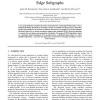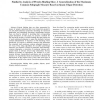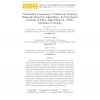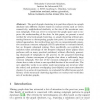11 search results - page 1 / 3 » RASCAL: Calculation of Graph Similarity using Maximum Common... |
CJ
2002
13 years 10 months ago
2002
ISDA
2009
IEEE
14 years 5 months ago
2009
IEEE
—Protein binding sites are often represented by means of graphs capturing their most important geometrical and physicochemical properties. Searching for structural similarities a...
JGAA
2007
13 years 10 months ago
2007
Graphs are an extremely general and powerful data structure. In pattern recognition and computer vision, graphs are used to represent patterns to be recognized or classified. Det...
CIKM
2009
Springer
14 years 5 months ago
2009
Springer
Many applications in structure matching require the ability to search for graphs that are similar to a query graph, i.e., similarity graph queries. Prior works, especially in chem...
PKDD
2010
Springer
13 years 8 months ago
2010
Springer
The goal of graph clustering is to partition objects in a graph database into different clusters based on various criteria such as vertex connectivity, neighborhood similarity or t...




